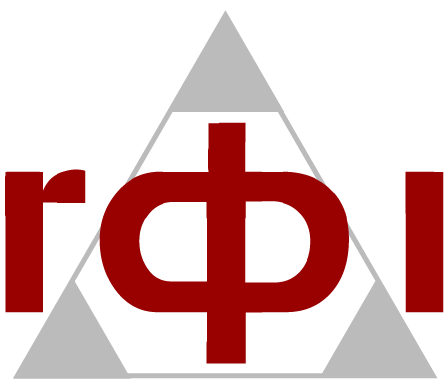Are there any treatments for POI?
10-Dec-2023
Professor Talaulikar discusses the treatment options for Premature Ovarian Insufficiency (POI), including different HRT (Hormone Replacement Therapy) options.
Specialists recommend that women with Premature Ovarian Insufficiency (POI) take oestrogen replacement because lack of oestrogen can cause bone thinning, an increased risk of heart disease and cognitive decline, as well as poor quality of life due to symptoms mentioned previously. Women with POI are usually advised to have hormone replacement therapy (HRT) until the average age of the natural menopause (50 years).
Oestrogen replacement can be given as part of HRT or the combined oral contraceptive pill. HRT is usually recommended as the first-line treatment for women with POI. It is up to you to decide whether you would like to take oestrogen replacement and, if so, which option you would like: the pill or HRT. Some women prefer to use alternative medicines, dietary supplements, herbal and homeopathic remedies. It is important to remember that these treatments do not necessarily protect against heart disease and low bone density.
What are the types of HRT?
Combined HRT (oestrogen and progesterone) - this can be given in two ways:
Sequential HRT - oestrogen only for the first 14 days, then both hormones for the second 14 days. This usually results in monthly withdrawal bleeds as it tries to copy the natural menstrual cycle and causes a period.
Continuous combined HRT - oestrogen and progesterone, taken together daily (one a day) for 28 days - this means that there will be no withdrawal bleeds.
Women with an intact womb need to take a combination of oestrogen and progesterone as part of HRT.
Oestrogen only (no progesterone) - when women have had a hysterectomy (removal of womb), they do not need progesterone to protect the lining of the womb (except in cases of severe endometriosis or other oestrogen-dependent tumours).
HRT is available for prescription in several different forms. It can be taken as a skin patch, tablet, gel, implant, vaginal ring, progestogen-releasing uterine coil and vaginal cream or pessary. Some types work best for certain symptoms. Vaginal oestrogen creams or pessaries do not carry the same risks associated with oral or transdermal HRT, but they work best for symptoms such as vaginal dryness, bladder issues and painful sex. As the dose of oestrogen is very low, they also do not require the protective effect of the progesterone.
The contraceptive pill is an alternative option to the use of HRT. The pill also contains oestrogen and progesterone hormones like HRT, however their dosage may vary depending on the preparation. Generally, most pill regimens will contain a pill-free week at the end of the month (unlike HRT) where there is no break in the medications. One may need to try several different brands or forms of HRT to find the one that really suits an individual.
Because of the small possibility of a pregnancy in women with POI, those who do not wish to risk conceiving should use some form of contraception. In this situation, the combined oral contraceptives containing oestrogen will provide adequate oestrogen for wellbeing and bones and can replace the need to take HRT, while providing contraception.
Testosterone – this is a key female hormone and is now recommended as part of HRT for symptoms such as low libido and low energy levels. Testosterone is an off-licence prescription medication in the UK (except where low libido is adversely affecting quality of life). It is available for use as gels, creams or implants and is usually prescribed once good levels of oestrogen have been established in the body using combined HRT.
What is body-identical HRT?
This consists of hormones that are identical in molecular structure to the hormones women make in their bodies. They're not found in this form in nature, but are made from a plant chemical extracted from yams and soy. Body-identical oestrogens are 17-beta-estradiol, estrone and estriol. Bio-identical progesterone is simply progesterone. It's micronised (finely ground) in the laboratory for better absorption in the body. The body-identical hormones (available through the NHS) have become popular in recent times as they appear to have a good long-term safety profile.
What are the risks of HRT?
For young women, the risks associated with HRT are very small, but every woman should talk to her doctor to weigh up the risks and benefits. The information contained in the leaflets provided with HRT packages can be misleading, as it mainly refers to women taking HRT after the age of the natural menopause (above 50 years). The biggest studies on risks of HRT (the Women's Health Initiative and Million Women studies) were undertaken in women aged over 50. Younger women who take HRT because of POI have higher benefits and fewer risks than older women.
1. Venous thromboembolism
HRT tablets increase the risk of venous thromboembolism (blood clots), pulmonary embolism (blood clot in lungs) and stroke (1-2 extra cases per 1000 HRT users). HRT patches have lower risk of blood clotting than tablets. Overall, the risk of blood clots with all types of HRT is lower than taking the contraceptive pill. The risk may be higher for women who smoke or are overweight.
2. Stroke
The risk of stroke does not appear to be significantly increased in women under 60 years old. For women with risk factors related to blood clotting, transdermal HRT appears to be safe.
3. Breast cancer
For women with POI and taking HRT there is no increased risk of breast cancer until the age of natural menopause, although they will still have the same risk as the rest of the population (this is called background risk).
4. Endometrial (womb) cancer
Oestrogen is always given with progesterone unless the woman has had a hysterectomy. This is because oestrogen on its own causes thickening of the womb lining, which can lead to heavy irregular bleeding and, over time, this increases the risk of cancer in the womb lining (endometrial cancer). Adding progesterone for at least 10-12 days every month, or continuously, eliminates this risk.
5. Other risks
There is a chance that taking HRT for a year or more could increase your risk of gallbladder disease (gallstones).
What are the common side effects of HRT?
Women react differently to HRT, so there is no one preparation that suits everyone. Some side effects which are common to experience on HRT are also common with the pill.
Oestrogen related side effects - breast tenderness, leg cramps, skin irritation, indigestion, nausea, headaches.
Progesterone related side effects - premenstrual syndrome-like symptoms, fluid retention, bloating, breast tenderness, depression, mood swings and pelvic pain.
There is no evidence of weight gain with HRT. Researchers have found that, although women may put on some weight when they first start to take HRT, after a while their weight is the same as it was before treatment.
Many of these common side effects simply go away when you have been on HRT for a while. Sometimes a change of product or dose helps. Nausea can be reduced by taking the HRT tablets at night with food instead of in the morning, or by changing from tablets to another type of HRT. If you experience significant nausea or migraine headaches with tablets, patches or gels can often be a better option. Progesterone-related side-effects can often be avoided if the progesterone coil (Mirena intrauterine system) is used.
Breakthrough bleeding - Monthly sequential preparations should produce regular, predictable and acceptable periods. Some irregular breakthrough bleeding is common in the first 3-6 months, especially if you take continuous combined 'no bleed' HRT. If there is persistent irregular vaginal bleeding after six months of starting HRT, you will need to have further investigations.
How much will treatment cost?
HRT is only available on prescription and will be charged at the current prescription rate. Most forms of HRT will involve two medicines and you may need to pay two prescription charges. However, the UK Government has introduced an HRT Prescription Payment Certificate (HRT PPC) that, at the time of writing, costs the same as two prescriptions and covers you for a whole year.
Is HRT contraceptive?
HRT is not a contraceptive. Women who have been diagnosed with unexplained or immune-related POI may occasionally ovulate and there is an approximately 5-10% chance of having a pregnancy. Contraception is recommended to avoid unwanted pregnancy. An oral combined contraceptive pill may be the best choice in this situation, as it can provide both contraception and oestrogen replacement.
What should you do if you forget to take the medicine?
If you forget to take your HRT, do not take the doses that have been forgotten, just take the next dose when you remember. You may get some 'breakthrough bleeding' in the next few days, but there will be no long-term effect. If using the oral contraceptive pill, be aware that missing pills will reduce its effectiveness as a contraceptive, so follow the advice on the package information leaflet.
Are women with POI able to get pregnant?
Infertility can be a devastating consequence of POI. Unlike women with regular periods, women with POI do not ovulate (release an egg) every month. However, studies have shown that women with unexplained or immune-related POI do occasionally ovulate and approximately 5-10% will become pregnant. Unfortunately, there is no way of predicting which group of women this will happen to. Ultrasound scans and blood tests are often used to try to predict or monitor if there are any eggs growing in the ovaries, but these are not proven and are currently only used in research settings. Women who resume menstruation and ovulation following recovery from chemotherapy are fertile and may be able to conceive naturally.
HRT does not affect one's chances of becoming pregnant. However, the combined oral contraceptive pill is not a suitable treatment in case the woman wants to become pregnant because it prevents ovulation.
Women with POI can have fertility treatment in fertility clinics using eggs donated by an egg donor and fertilised in a test tube (in vitro fertilisation [IVF]) with their partner's sperm. They will need to take HRT to prepare the womb and thicken the womb lining before an embryo is placed inside. HRT is continued for the first few weeks of pregnancy. Many couples decide that remaining childless is a positive option. Adoption is a rewarding way of building a family, but it is not always easy. Adoption agencies expect the women to have ended any fertility treatment before applying. The local social services department should be able to provide guidance on this.
Where to get more information?
The Daisy Network www.daisynetwork.org
Human Fertility and Embryology Association - Information about IVF and list of clinics www.hfea.gov.uk
British Menopause Society www.thebms.org.uk
International Menopause Society www.imsociety.org

